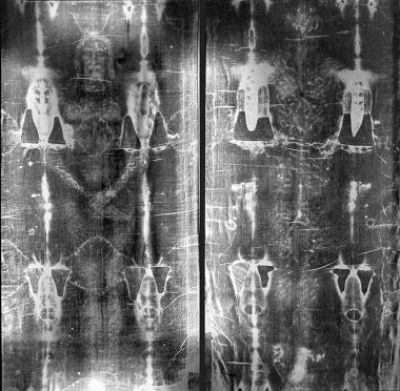
(CP) An Italian scientist and his team claim their research shows the Shroud of Turin, a fabric purported to have been Christ's burial garment, may have originated during the time of Jesus's death and resurrection.
Using a new X-ray technique called "Wide-Angle X-ray Scattering" to examine a sample of the linen, Liberato De Caro of Italy's Institute of Crystallography at the National Research Council and his colleagues determined in peer-reviewed research the shroud could be around 2,000 years old.
The researchers' findings were published in the international journal Heritage in April.
The Shroud of Turin is preserved at the royal chapel of the cathedral of San Giovanni Battista in Turin, Italy, and it depicts the image of a crucified man. Many have questioned the linen's authenticity since its emergence in the 14th century. Beginning in the 1980s, the Vatican encouraged scientists to conduct further investigations into its legitimacy.
The National Catholic Reporter reports that the research conducted in X-ray laboratories at the institute in collaboration with Professor G. Fanti of the University of Padua appears to contradict a 1988 carbon-dating study that suggested the fabric was only about 700 years old.
"The Shroud of Turin is the most important relic of Christianity. According to Christian tradition, it is the burial shroud that would have wrapped the body of Jesus after his crucifixion," De Caro wrote in an April 13 email interview with The National Catholic Reporter.
The scientist believes that carbon dating, a method of age determination that analyzes radiocarbon decay, is not always reliable with fabric, explaining why the 1988 study's conclusion may be incorrect.
"Fabric samples are usually subject to all kinds of contamination, which cannot always be controlled and completely removed from the dated specimen," he continued.
"If the cleaning procedure of the sample is not thoroughly performed, carbon-14 dating is not reliable," he added.
"This may have been the case in 1988, as confirmed by experimental evidence showing that when moving from the periphery towards the center of the sheet, along the longest side, there is a significant increase in carbon-14 (radiocarbon dating)."
De Caro has been investigating the shroud for about 30 years and developing techniques to examine the scale of atoms through X-rays. Three years ago, the scientist and his team developed a new method for dating samples from linen fabrics.
"The new dating method, based on a technique called Wide Angle X-ray Scattering, was first tested on linen samples already dated using other techniques, on samples that had nothing to do with the shroud, and then applied to a sample taken from the Shroud of Turin," De Caro told The National Catholic Reporter.
The scientist started researching the Shroud of Turin with his team in 2019, but the COVID-19 pandemic delayed their work.
The team eventually applied the new X-ray dating technique to the Holy Shroud, sending their findings to Heritage in March. The findings were published in April after a month of preparation and peer review from three independent experts and the journal's editor.
The new technique may also have found evidence that the shroud migrated from the Middle East to Europe.
The seven centuries of documented history regarding the Shroud of Turin appear to show it has only ever been located in Europe, leading to further questions regarding its authenticity. But De Caro said an analysis of the shroud showed traces of pollen unique to the ancient region of Palestine trapped in its fibers. The scientist suggested that this means the shroud has spent a significant deal of time in the Middle East and not just Europe.
"The Shroud of Turin challenges science, and each new piece of research could clarify part of the complex puzzle this relic represents," De Caro wrote.
"For example, the Shroud's image has yet to find a definitive explanation from those who have studied it, an explanation shared by the entire scientific community.
"It is as if a photographic plate had been imprinted by radiation," he continued. "By studying the traces left on the plate, one tries to trace the nature of the radiation and its properties. The same could be done for the Shroud's image."
De Caro stated that this new dating technique is only in its "infancy," and whether he uses it to continue studying the Holy Shroud depends on if there are new samples to analyze.
The scientist also expressed a desire to use the technique to examine other relics associated with Jesus, such as the Sudarium of Oviedo and the Veil of Manoppello. The former is a cloth that allegedly was used to cover and clean Jesus's face after his crucifixion, and the latter, also called the Veil of Veronica, is a piece of fabric supposedly imprinted with the face of Christ during his walk to Golgotha.